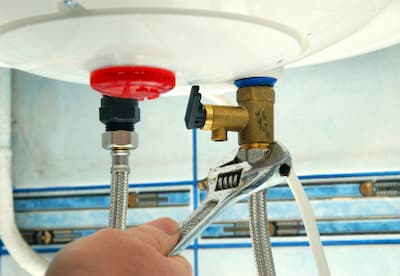Simple Steps to Caring for Your Home's Hot Water System
CallIn this article on the next paragraphs you can find a good deal of wonderful news with regards to How to Maintain Your Water Heater & Prolong its Life.

Warm water is essential for daily comfort, whether it's for a refreshing shower or washing recipes. To guarantee your warm water system runs efficiently and lasts longer, routine maintenance is crucial. This short article gives useful tips and insights on just how to keep your home's warm water system to prevent disruptions and costly repair services.
Introduction
Maintaining your home's hot water system could seem overwhelming, yet with a couple of basic steps, you can guarantee it operates efficiently for many years to come. This overview covers every little thing from understanding your warm water system to do it yourself maintenance tips and knowing when to call in expert assistance.
Value of Keeping Your Hot Water System
Regular maintenance not only prolongs the life-span of your hot water system however additionally guarantees it runs successfully. Disregarding maintenance can cause reduced performance, higher energy costs, and also early failing of the system.
Signs Your Hot Water System Needs Maintenance
Knowing when your warm water system requires focus can protect against significant concerns. Watch out for indications such as inconsistent water temperature, odd sounds from the heating system, or rusty water.
Purging the Hot Water Heater
Purging your hot water heater gets rid of debris build-up, boosting performance and prolonging its life.
Checking and Replacing Anode Rods
Anode rods avoid rust inside the storage tank. Examining and replacing them when broken is vital.
Facility Concerns Needing Professional Help
Instances include major leakages, electric issues, or if your water heater is regularly underperforming.
Routine Expert Maintenance Advantages
Professional upkeep can include extensive evaluations, tune-ups, and ensuring compliance with safety criteria.
Checking and Changing Temperature Setups
Changing the temperature settings makes certain ideal performance and safety and security.
DIY Tips for Maintenance
You can execute a number of upkeep jobs on your own to keep your warm water system in leading condition.
Looking for Leaks
Consistently evaluate pipes and links for leaks, as these can lead to water damages and higher expenses.
Recognizing Your Hot Water System
Prior to diving into upkeep tasks, it's handy to comprehend the basic parts of your hot water system. Typically, this consists of the hot water heater itself, pipes, anode poles, and temperature controls.
Month-to-month Upkeep Tasks
Normal regular monthly checks can aid catch small issues before they rise.
Checking Pressure Relief Valves
Examining the pressure safety valve guarantees it functions properly and avoids too much pressure accumulation.
Shielding Pipes
Protecting warm water pipes decreases heat loss and can save power.
When to Call a Professional
While DIY upkeep is beneficial, some problems need professional experience.
Final thought
Routine upkeep of your home's hot water system is vital for performance, long life, and expense financial savings. By adhering to these suggestions and understanding when to look for specialist aid, you can ensure a reliable supply of hot water without unforeseen interruptions.
How to Maintain an Instant Hot Water Heater
Before tinkering with your hot water heater, make sure that it’s not powered on. You also have to turn off the main circuit breaker and shut off the main gas line to prevent accidents. Also turn off the water valves connected to your unit to prevent water from flowing into and out of the appliance. 2. When you’re done, you have to detach the purge valves’ caps. These look like the letter “T†and are situated on either side of the water valves. Doing so will release any pressure that has accumulated inside the valves while at the same time avoid hot water from shooting out and burning your skin. 3. When the purge valves’ caps are removed, you have to connect your hosing lines to the valves. Your unit should have come with three hoses but if it didn’t, you can purchase these things from any hardware or home repair shops. You can also get them from retail stores that sell water heating systems. Read the user’s manual and follow it to complete this task properly. When the hosing lines are connected, open the purge port’s valves. 4. You should never use harsh chemical cleaners or solutions when cleaning your unit. Make use of white vinegar instead. It should be undiluted and you’ll probably use about 2 gallons. 5. Now flush your water heater. This task should probably take about 40 minutes. We can’t give you specific directions for this because the procedure is carried out depending on the type, model and brand of your heater. With that being said, refer to the user’s manual. 6. When you’re done draining the unit, you have to turn off the purge port valves again. Remove the hosing lines that you earlier installed on each of the water valves. Put the valve caps (purge port) back in their respective places and be very careful so as not to damage the rubber discs that are found inside these caps. 7. Now that everything’s back in place, check your user’s manual again to find out how to reactivate your water heating system. 8. Once it is working, turn one of your hot water faucets on just to let air pass through the heater’s water supply pipes. Leave the tap on until water flows smoothly out of it. https://www.orrplumbing.com/blog/2014/september/how-to-maintain-an-instant-hot-water-heater/

As a keen reader on What Kind of Maintenance Do Water Heaters Need?, I was thinking sharing that editorial was a great idea. You should take the time to share this page if you enjoyed it. Thank you for being here. Return soon.
Call Today